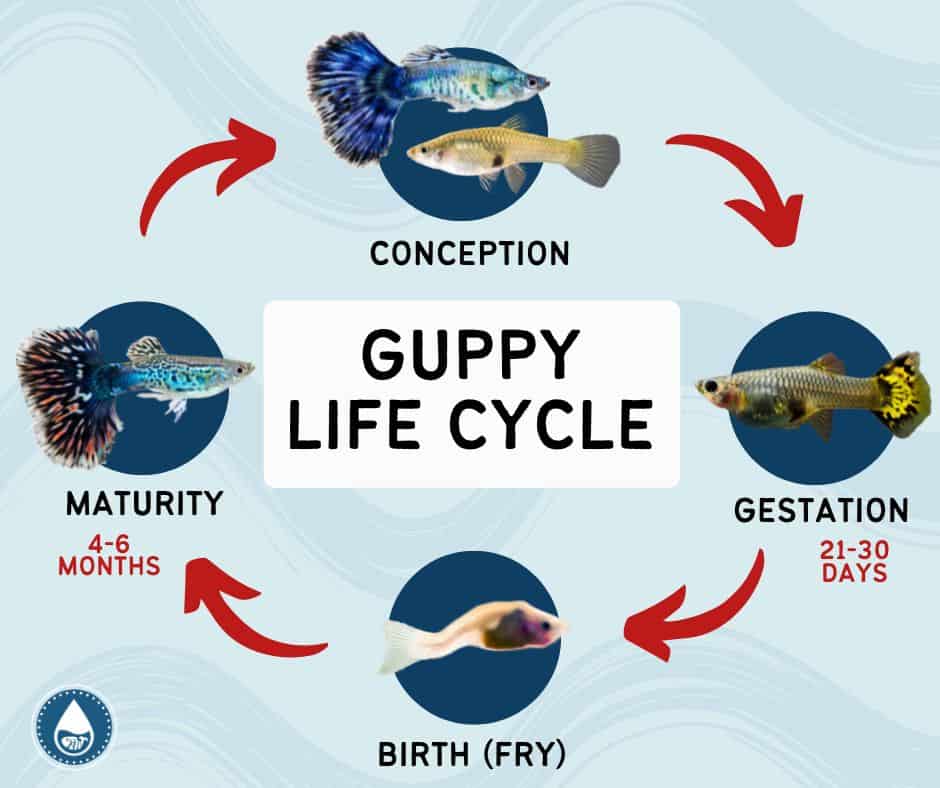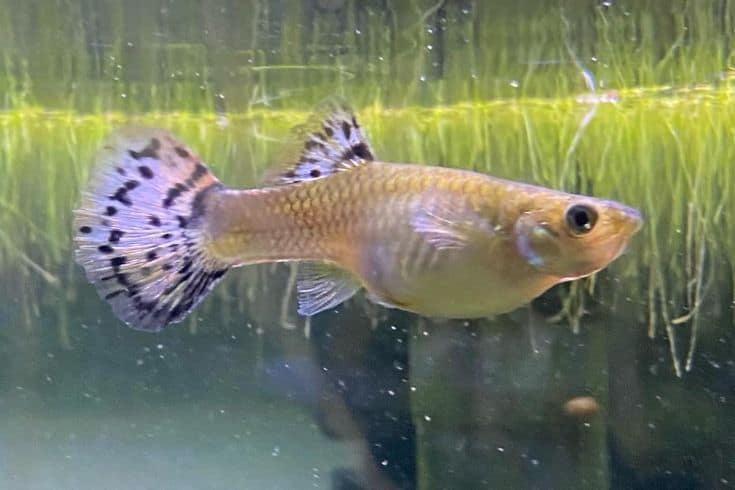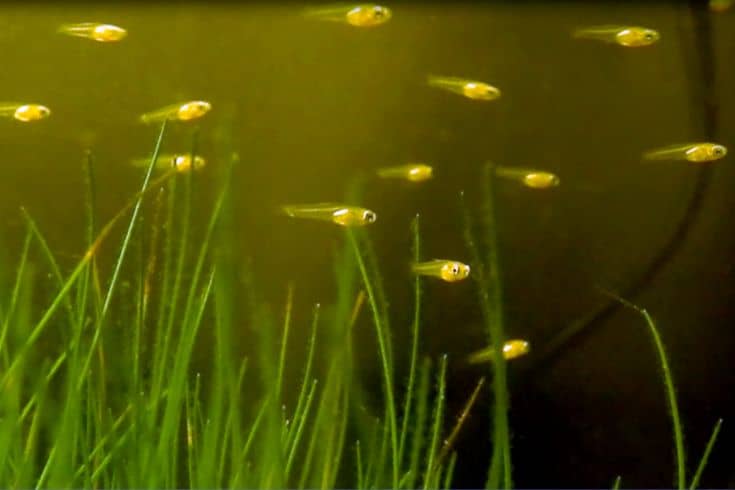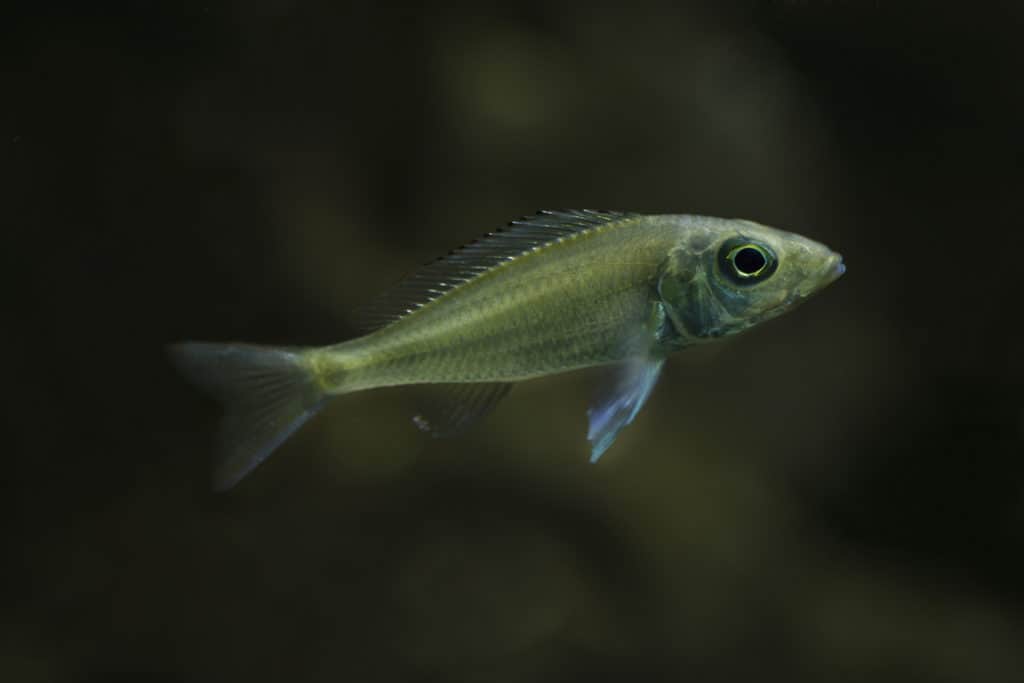When talking about one of the most popular fish in the world, it’s natural to wonder how long they live and what their life cycle is like. For many people, guppies are the gateway fish – the first freshwater fish they ever kept. Though often thought of as a “starter fish,” Guppies can be found in nearly every corner of the world and come in a wide variety of colors and patterns.
In this article, we’ll take a look at the life cycle of a guppy – from birth to adulthood – and discuss some of the different stages of growth they go through. We’ll touch on some of the key facts you need to know about each stage, and give you some pointers on how to care for your fish at each stage of their lives.
Guppy Life Cycle

Guppies are livebearers, which means that they give birth to live young rather than laying eggs. The gestation period for a guppy is usually between 21 and 30 days, though it can be as short as two weeks in some cases. However, the life cycle of a guppy actually begins with the breeding of guppies – at conception.
Conception
Commonly considered the beginning of the guppy life cycle, conception is when a male and female guppy mate. This can happen either by chance – if you have a population of guppies consisting of mixed males and females – or on purpose, if you’re breeding guppies.
During mating, the male will chase the female and “nip” at her fins in order to get her attention. Typically, several different males will attempt to mate with a single female. Duller males are often ignored in favor of more fit males. If the female is interested, she will allow the male to swim alongside her and tap her body with his.
Mating is a relatively quick process – lasting only a few seconds to a minute – during which the male will deposit his sperm inside the female. The female can store the sperm and use it to fertilize her eggs for several weeks, allowing her to give birth multiple times without having to mate again.
Gestation
After conception, the female will begin to show signs of pregnancy – known as gestation. Most guppies have a gestation period of 21-30 days, after which the female guppy will give birth to anywhere from 5 to 100 live young. The number of babies a guppy has varies depending on the size and health of the mother, as well as the water conditions they’re kept in.
Pregnant females need extra care and attention, as they are more susceptible to stress and disease. They also need plenty of food – especially live foods such as blood worms – to support the baby guppies growing inside them. Your pregnant fish will also start to look “rounded” as her belly swells with the developing fry.

You’ll also want to pay attention to the gravid spot – a dark patch on her belly that is visible when she’s pregnant. This dark spot will get larger as the pregnancy progresses, and is usually a good indicator of when the pregnant guppy is due to give birth. In some cases, you’ll even spot tiny guppy eyes peering out from the gravid spot!
Birth
Whether you’re dealing with a common guppy or a fancy guppy, the birthing process is relatively similar. To start with, you’ll need to provide clean water that’s well-suited for the needs of newborn fry. You’ll be dealing with a brood size of dozens of fish, so a larger tank is best. Aim for at least 10 gallons, and make sure it is well-heated.
When the time comes, the mother guppy will “drop” her fry – usually at night while everyone is sleeping. The fry are born fully formed and independent, and will quickly start to swim away from their mother. Like most animal species, the fry are born weak and vulnerable, and need time to grow and develop. However, they will start to eat and swim on their own almost immediately.
The survival rate for newborn guppy fry will vary depending on the conditions they’re kept in. Keeping your guppy fry alive is a matter of providing them with the cleanest water possible and hiding places for them to hide from predators. Many fry will also die due to cannibalism, so be sure to remove all adult fishes (even their parents) from the breeding tank as soon as possible.
Guppy Fish Growth Stages
Now that we have a better understanding of how a guppy’s life cycle works, let’s take a look at the different guppy growth stages. The distinction between these stages is important, as it will help you determine the best care for your fish at each stage of their lives.
Fry
Guppy fry are born fully-formed and independent but still very small. By the end of the first 30 days of their lives, they average just 0.24 inches or 0.6 centimeters in length. At this stage of their lives, guppies also lack the bright coloration of their adult counterparts. Realistically speaking, your fry will look like tiny, drab versions of their parents.
As one would expect, the conditions of food availability, water quality, and tank mates will all play a role in how quickly the fry grow. Fry cannot digest pellets and flakes at this juncture, nor can they take on larger chunks of protein. However, things like mosquito larvae and daphnia are perfect for their needs. You can also purchase special fry foods from your local fish store.
Some beginner fishkeepers also wonder how often to feed the fry. The best answer is “as much as they can eat.” Fry have tiny stomachs, so they need to eat small meals several times a day. Shoot for 3-5 meals daily, and remove any uneaten food immediately to prevent water quality issues. This way, you can be sure your fry are getting the nutrition they need to survive.
Juvenile Guppy
Between days 30-60, your fry will transition into the juvenile stage. At this point, they will start to develop subtle colors and patterns on their bodies. They will also begin to develop the “swordlike” dorsal fins that are characteristic of male guppies. While juvenile guppies are still tiny, they are considerably larger than fry at between 0.47 to 0.78 inches.

Frequent water changes are a must under every circumstance, but they’re especially important during the juvenile stage. Because their growth rate is so rapid, guppy fry produce a lot of waste. Ammonia and nitrites can quickly build up in the water, leading to serious water quality issues and disease. It’s crucial that you keep a close eye on water conditions to keep your guppies healthy.
As with fry, feeding juvenile guppies is all about providing them with small meals several times a day. You can start to introduce pellets and flakes into their diet, but make sure they are small enough for the fry to eat. You should still ensure that they have sufficient fat intake to support their growth, so live foods should still make up a large part of their diet.
Young Guppy
At between 2-4 months of age, your guppies will transition into the young adult stage. At this point, they will be fully grown, and their coloration will be close to what it will be as adults. Male guppies will also have fully-developed “swords” on their dorsal fins. In short, your guppies will start resembling the colorful fish you see in pet stores.
Sexual dimorphism, or the ability to distinguish males from females, also becomes apparent during the young adult stage. Male guppies tend to be smaller than females and have brighter colors. Females, on the other hand, are larger with duller colors. This difference is because males need to be more conspicuous to attract mates, while females need to be less visible to avoid predators.

Young guppies aren’t able to reproduce yet, so you won’t see a wide variety of behavioral differences between males and females at this stage. However, you may notice that your males become more aggressive as they begin to vie for dominance within a shared community tank. Though guppies are fundamentally peaceful fish, aggression shouldn’t be a major issue.
To make the most of their young adult stage, be sure to provide your guppies with a varied and nutritious diet. They no longer require abundant food several times a day, but they should still have 3-4 small meals every day. A diet rich in live foods, high-quality flake foods, and freeze-dried foods will help your guppies stay healthy and thrive.
Maturity/Adult Guppy
Between 4-6 months of age, guppies enter their adult stage. At this point, they will be fully grown, measuring up to 3 inches in length on average. Each will also feature bright, attention-grabbing coloration, and males will have well-developed dorsal fins. Females, on the other hand, will be rounder in shape with much shorter fins.
Mature guppies can start reproducing at the 20-week, or 5-month mark. Females will be ready to lay eggs every 4-6 weeks, so you can expect a lot of fry if you don’t take steps to prevent it. If you want to avoid an explosion in your guppy population, it’s best to remove pregnant females and raise the fry separately.
Nutrition-wise, adult guppies still thrive on a wide variety of food, but need fewer meals than fry or juveniles. 2-3 small meals per day should be sufficient to keep your guppies healthy. A diet rich in live foods, high-quality flake foods, and freeze-dried foods will help your guppies stay healthy and thrive.
How Long Do Guppies Live?
Guppies have a life span of 2-5 years, but the average guppy raised in captivity will live for 3 years with proper care. Wild guppies tend to have better odds of survival, as they are more accustomed to their natural environment. In captivity, guppies are more susceptible to disease and water quality issues, which can shorten their life span.
Some common health problems that can shorten a guppy’s life span include:
- Ich: A common fish disease caused by a parasitic infection. Symptoms include white spots on the fish’s body, lethargy, and a loss of appetite.
- Gill flukes: A parasitic infection that attacks a fish’s gills, causing difficulty breathing. Symptoms include gasping at the surface of the water and increased mucus production.
- Fungal infections: A common fish disease caused by a fungal infection. Symptoms include white spots on the fish’s body, lethargy, and a loss of appetite.
To help your guppies stay healthy and live a long life, be sure to provide them with a clean and well-maintained aquarium. A diet rich in live foods, high-quality flake foods, and freeze-dried foods will also help your guppies stay healthy and thrive.
The Takeaway
Guppies are an excellent choice for beginner fishkeepers, as they are relatively easy to care for and can live in a wide range of water conditions. With proper care, your guppies will bring you years of enjoyment. Watching them grow from fry to adults is a rewarding experience, and you’ll get to witness the magic of reproduction as they produce fry of their own.
We hope this guide has given you everything you need to know about caring for guppies. If you know someone who’s thinking about getting into fishkeeping, be sure to share this guide with them. And if you have any questions or tips of your own, feel free to leave a comment below. Happy fishkeeping!
